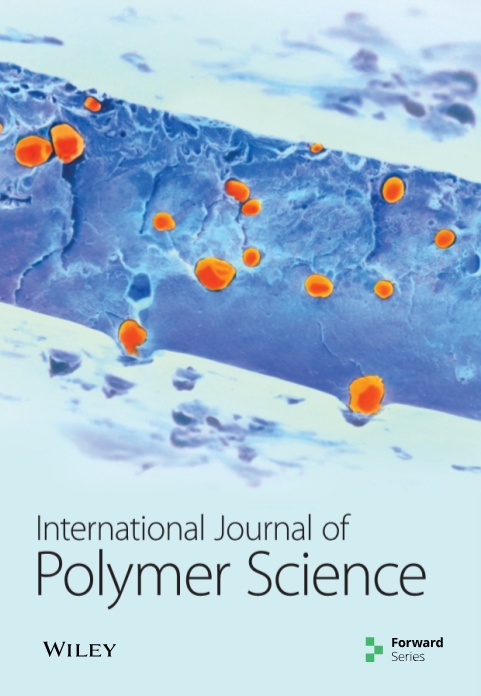Comparison of the Film Properties of Lemon and Sour Cherry Seed Essential Oil-Added Glycerol and/or Sorbitol-Plasticized Corn, Potato, Rice, Tapioca, and Wheat Starch-Based Edible Films
IF 4.4
4区 化学
Q2 POLYMER SCIENCE
引用次数: 0
Abstract
In this study, lemon, and sour cherry seed essential oil-added glycerol and/or sorbitol-plasticized corn, potato, rice, tapioca, and wheat starch-based edible films were produced using the casting method. Starch, essential oil type and glycerol and/or sorbitol effects on the thickness, moisture content, water solubility, swelling index, and water vapor transmission rate of the films have been studied. The interaction of the film components was evaluated by Fourier transform infrared spectroscopy. It was seen that wheat starch-based control films give the lowest thickness value (0.010 mm). Wheat starch-based control films (15.50%), sour cherry seed essential oil-added corn starch (17.80%), and lemon essential oil-added rice starch-based composite films (17.70%) have high moisture content. The lowest solubility values were obtained from wheat starch control (22%) and sour cherry seed essential oil-added corn starch composite (16.40%) films. The highest swelling index values were obtained from wheat starch-based control (210.90-289.0%), sour cherry seed essential oil-added tapioca starch (388.80%), and lemon essential oil-added potato starch-based (433.20%) composite films. Rice starch-based control films have the lowest water vapor transmission rate (). FTIR spectra of edible composite films proved that there is no chemical interaction between the film component and that they kept their structure. The main difference of this study from previous studies was the use of sour cherry seed essential oil for the first time in edible film production and the comparison of the film properties of corn, potato, rice, tapioca, and wheat starch-based edible films plasticized with glycerol or sorbitol.添加甘油和/或山梨醇的柠檬和酸樱桃籽精油塑化玉米、马铃薯、大米、木薯和小麦淀粉基食用薄膜的薄膜特性比较
本研究采用浇铸法生产了柠檬和酸樱桃籽精油添加甘油和/或山梨醇塑化的玉米、马铃薯、大米、木薯和小麦淀粉基食用薄膜。研究了淀粉、精油类型以及甘油和/或山梨醇对薄膜厚度、含水量、水溶性、膨胀指数和水蒸气透过率的影响。傅里叶变换红外光谱法评估了薄膜成分之间的相互作用。结果表明,小麦淀粉基对照薄膜的厚度值最低(0.010 毫米)。小麦淀粉基对照薄膜(15.50%)、酸樱桃籽精油添加玉米淀粉(17.80%)和柠檬精油添加大米淀粉基复合薄膜(17.70%)的水分含量较高。小麦淀粉对照(22%)和酸樱桃籽精油添加玉米淀粉的复合薄膜(16.40%)的溶解度值最低。膨胀指数值最高的是小麦淀粉基对照组(210.90-289.0%)、酸樱桃籽精油添加木薯淀粉(388.80%)和柠檬精油添加马铃薯淀粉基(433.20%)复合薄膜。大米淀粉基对照薄膜的水蒸气透过率最低()。可食用复合薄膜的傅立叶变换红外光谱证明,薄膜成分之间不存在化学作用,并保持了各自的结构。本研究与以往研究的主要区别在于首次在食用薄膜生产中使用了酸樱桃籽精油,并比较了玉米、马铃薯、大米、木薯和小麦淀粉基食用薄膜与甘油或山梨醇塑化后的薄膜特性。
本文章由计算机程序翻译,如有差异,请以英文原文为准。
求助全文
约1分钟内获得全文
求助全文
来源期刊

International Journal of Polymer Science
POLYMER SCIENCE-
CiteScore
6.10
自引率
0.00%
发文量
55
审稿时长
>12 weeks
期刊介绍:
The International Journal of Polymer Science is a peer-reviewed, Open Access journal that publishes original research articles as well as review articles on the chemistry and physics of macromolecules.
 求助内容:
求助内容: 应助结果提醒方式:
应助结果提醒方式:


